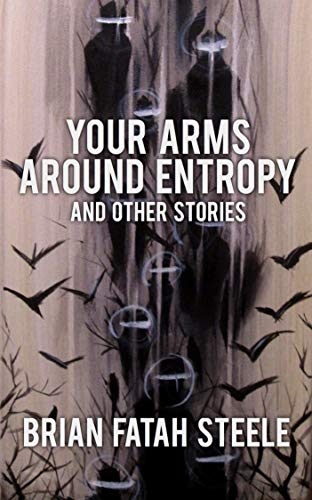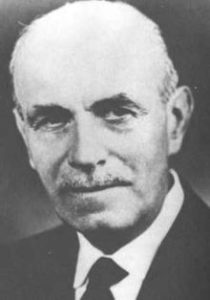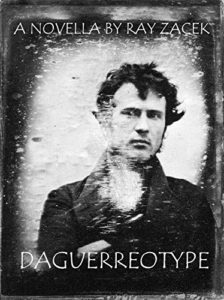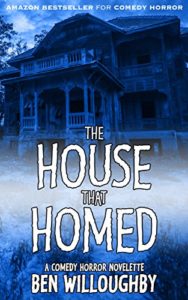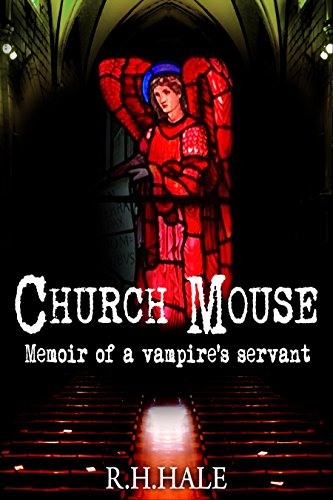
Today it is my great pleasure to talk with RH Hale, who is the author of Church Mouse: Memoir of a vampire’s servant. Which is one of the best indie authored novels I’ve read, and is right up there with the best of the traditionally published novels I’ve read.
I think it is unusual for a debut novel to have the gripping power that is in Church Mouse. The book is truly a Gothic tour-de-force.
But I’m sure you all want to learn a bit about the author of this fabulous novel. So without further ado, let’s meet RH Hale!
CW: Tell us a little about yourself.
RH: I was born in Scotland, where I currently reside. I lived in England for a while where I got my science degree from Kingston University in lovely Surrey. I’ve been a ghost tour guide and performed in several small-scale theatre productions including the Edinburgh Fringe. I can’t make up a tune to save my life but love music and have written dozens of lyrics, poems and two screenplays, all unpublished. Church Mouse is my first complete novel, published in October 2017.
CW: Aside from writing, how do you spend your free time?
RH: Reading when I can. I live on the coast near the countryside and love a good walk, especially if someone’s friendly dog says hello, which makes my day! But being an indie author, I’d be lying if I denied a lot of my time is taken up with promoting my book on Twitter. It may be a slow climb but very worth it.
CW: Very much worth it, indeed! What did you read as a child?
RH: I read a lot of Roald Dahl and proudly kept his complete collection on my shelf. I realise he’s a bit controversial now, but I was just a kid. Matilda, Boy and The Witches were my favourites.
CW: Might I just say here that if we were to eliminate all the controversial authors, I doubt there would be much left worth reading. But go on.
RH: Some other childhood favourites were The Queen’s Nose by Dick-King Smith, The Chronicles of Narnia by C.S.Lewis; and I loved Beyond The Firelight, a collection of short tales by Ann Lawrence, which I believe is still on my shelf.
And I was absolutely hooked on a major weekly series called Storyteller: hundreds of illustrated stories and poems, each issue coming with an audio cassette tape (we’re back in the 80s here) narrated by great actors including Derek Jacobi and Miriam Margoyles. Truly terrific stories of infinite variety, old, new, and mythical from all cultures with beautiful illustrations! Some tales very scary for kids.
The Christmas issue was my first introduction to Dicken’s A Christmas Carol, narrated by the great Joss Ackland …I was TERRIFIED! They may currently be stored in boxes but that’s one childhood collection I’m not parting with.
CW: Very much so. Those books of childhood are some of my most cherished possessions. Please tell us about a book that has influenced you as a person.
RH: Oooh, that’s a tricky one to answer without cheating and naming several.
As a child of seven or eight, in school we read What Difference Does It Make Danny? by Helen Young. It’s the story of a young boy, Danny, who is the gym teacher’s pet for being a top swimmer. Swimming is his passion. Unknown to this teacher, Danny is also epileptic. Furious when he finds out, this teacher forbids Danny to swim again. It’s essentially a story about overcoming prejudice and discrimination. I knew next to nothing about epilepsy at that age, and I think it taught me a lot.
More recently, I’d say Quiet Girl in a Noisy World: An Introvert’s Story by Debbie Tung, published last year I think. It’s actually a graphic novel, practically a comic but wonderfully done, about what it’s like growing up different and the bravery of self-acceptance in a world of people braying at you to “fit in”. It’s brilliant, funny and there’s so much I familiarised with it was ridiculous.
At the risk of sounding cliché, Lord of the Flies by William Golding, and George Orwell’s Animal Farm (a book everyone needs to read!) and 1984, shocked and really opened my eyes to the ever-present human demon lurking beneath the skin, often too close for comfort.
CW: Yes, 1984 was one of the most terrifying books I’ve ever read. More so than many “horror” novels! Would you tell us how many fiction books you read a year?
RH: It’s a rather boring answer, but I don’t keep count. Into double figures, though not as many as I’d like. One of my dreams is to swing through the double doors of Waterstones bookstore with a small fortune in my pocket. There are also a lot of indie books I want to read on my Kindle, plus a stack of paperbacks on my bedside table. A healthy sight I think. ☺
CW: Yes, indeed. We like those stacks of books waiting to be read! Tell us about a book that’s influenced you as a writer.
RH: Daphne Du Maurier’s Rebecca whetted my appetite for finally committing to writing properly. Du Maurier’s incredibly atmospheric storytelling is intoxicating, seductive, and just possessed me with an irresistible hunger to do so.
May I cheat again and add another? Or two?
CW: By all means, go ahead.
RH: Well, then, Burning Your Boats: a complete collection of all short stories from one of my all-time favourite authors, Angela Carter. It’s an absolute feast for the eyes.
In terms of writing horror, one of the most terrifying books I ever read was Ghost Story by Peter Straub. I like to consider myself a toughie, but that novel literally had me repeatedly looking over my shoulder whilst reading, alone.
CW: Now I have some books to add to my ever growing list to read! Okay, you are being exiled to a small island in the Pacific. You can take 3 books with you. What books would you take and why?
RH: Only three? Ouch. Well they’d have to be long books to keep me occupied.
- Probably something I haven’t read yet, so as I don’t already know what’s coming. Either The Complete Works of Sheridan Le Fanu; or The Necronomicon, a painfully bulky hardback of the complete works of H.P Lovecraft, which I’m still getting through. Short story collections are great because of the variety – Don’t like that story? No problem, here’s another.
- The Talisman by Stephen King and Peter Straub, one of the greatest books I ever read. Probably three times now and never tired of it.
- For practical purposes, non-fiction: SAS Survival Handbook by John Lofty Wiseman. Packed with info about how/what to eat and finding shelter in the wild in all climates, land, sea, desert, etc. Handy and potentially lifesaving material if I’m gonna be stuck on this here island a while…
CW: Those sound like great choices. More to add to my list! Please tell us what was the genesis of Church Mouse?
RH: Two stages really. It started as a slow burner, a drawn-out daydream lingering at the back of my mind. In fact, it was initially going to be set in a house.
Precisely why I started thinking about the protagonist Rona hiding in a church gallery, I honestly can’t remember, except that one day I imagined the initial moments where she sees her immortal employers for the first time – and it played out seamlessly as if I were watching a film, spoken to me word for word. That scene, written exactly as I imagined it, was so uncannily concrete and three-dimensional that I thought, ‘This is ridiculous’, and had to get it down on paper. The rest of the book grew from there. Church Mouse was really born out of a bunch of scenes scribbled in notes that gradually came together.
CW: Very interesting. I always like to hear how writers write. So, how much research did you put into your book?
RH: No excuse for not getting the terminology right, so I did as much research as possible on the nomenclature of Gothic and church architecture, double and triple-checking it, bookmarking glossaries, etc. The same for antique jewellery, arson, old furniture, and medieval weaponry. All fascinating stuff.
Seton Collegiate Church, a small tourist attraction in East Lothian, partly influenced the atmosphere for St Patrick’s in the book. It’s owned by Historic Scotland and bare as a bone, but has a cold, comforting loneliness inside. As for the church vaults, I knew what I was talking about because I was a ghost tour guide in Edinburgh’s underground vaults for over three years. I’ve made people scream in there, filmed in there, changed flashlight batteries, felt my way along walls, and locked them up hundreds of times, often in darkness. The mention of mould in the book is taken from first-hand experience, and it’s no picnic to breathe in.
I haven’t read many vampire novels apart from Stoker’s Dracula and Ann Rice’s Interview With The Vampire many years ago. But whenever I saw them in film, the scientist in me always reared its head and questioned how is it technically possible for hard incisor enamel to spontaneously expand and sharpen like that? I know fiction is fiction, but it just…bugged me. That’s why I made them a little different in Church Mouse, but no less savage or animalistic.
CW: Yes, I wondered about the teeth thing in your book. Now I know! Now, aside from Rona’s saga, who else is clamoring to have his or her story told?
RH: There’s a character in Church Mouse called Dudley Flotterstone who only appears briefly in one scene, but whilst writing it I felt a bud forming. I saw him very clearly and decided I wanted him as the protagonist for another horror story in the works, Krellingsgait, a place also mentioned in the book.
CW: Where we can find your books?
RH: They are currently available as an eBook on Amazon Kindle, Goodreads, Kobo, Barnes and Noble, iBooks, GooglePlay and other online bookstores worldwide.
Hopefully available in hard copy within the next few months.
CW: Well, this has been delightful! Thank you for taking the time to share with us today a bit about yourself and your writing.
And I encourage you all to buy a copy of Church Mouse. It is a truly fabulous novel. Anne Rice, move over. The book is available at:
Amazon US
Amazon UK
You can get in touch with RH Hale at the following places:
R.H.Hale was born in Edinburgh, Scotland. After gaining a first class honours degree in science at Kingston University in Surrey, she went on to explore the arts and has worked in theatre, ghost tours and writing. She currently lives in East Lothian. Church Mouse is her first novel.
Share This!

